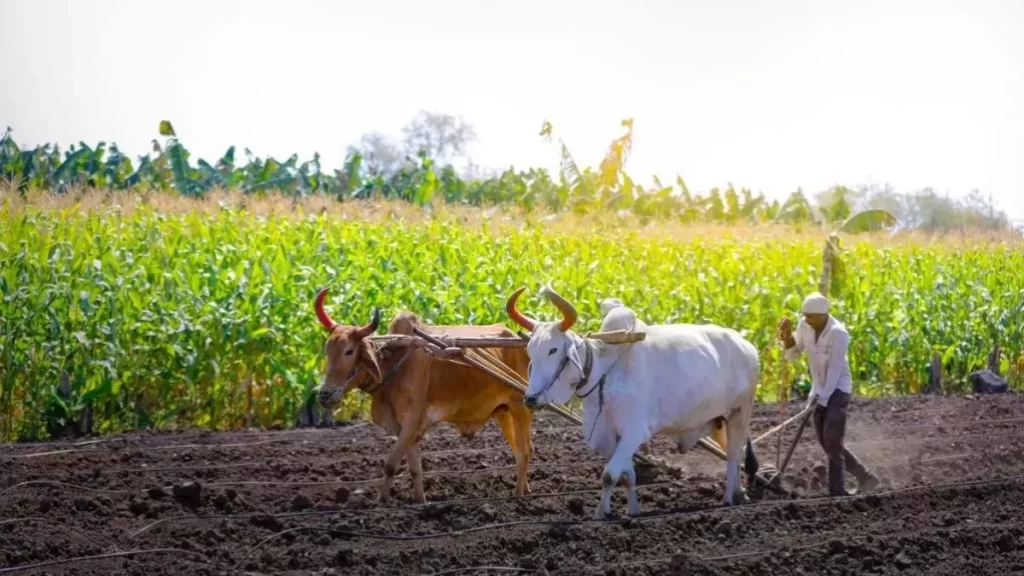Government Approves Significant Price Increases for 2025-26 to Ensure Farmer Prosperity
New Delhi – The Central Government has announced the Minimum Support Prices (MSP) for 14 Kharif crops, including paddy, arhar, and soybean, for the 2025-26 marketing season, delivering a significant boost to farmers. The decision, made during a cabinet meeting chaired by Prime Minister Narendra Modi on May 28, 2025, aims to ensure farmers receive at least 50% profit over production costs, with an estimated expenditure of ₹2,07,000 crore. The highest MSP increase was approved for nigerseed (₹820/quintal), followed by ragi (₹596/quintal), cotton (₹589/quintal), and sesamum (₹579/quintal).
Key MSP Increases for Kharif Crops
The MSP for common paddy has been raised by ₹69 to ₹2,369 per quintal from ₹2,300 last year, while Grade-A paddy will fetch ₹2,389 per quintal, up from ₹2,320. Arhar (tur) dal saw the largest hike among pulses, with its MSP increased by ₹450 to ₹8,000 per quintal from ₹7,550, reflecting the government’s push to promote pulse cultivation and reduce import dependency. Other notable increases include soybean (₹436/quintal to ₹5,328), groundnut (₹480/quintal to ₹7,263), and urad (₹400/quintal to ₹7,800). Among cereals, hybrid and Maldandi jowar MSPs rose by ₹328 to ₹3,699 per quintal, while maize and bajra saw hikes of ₹175 and ₹150, respectively.
Detailed MSP Table for 2025-26
Below is the complete list of MSPs for the 14 Kharif crops for the 2025-26 season, along with the increase over the previous year:
| Crop | MSP 2025-26 (₹/Quintal) | Increase from 2024-25 (₹) |
|---|---|---|
| Paddy (Common) | 2,369 | 69 |
| Paddy (Grade A) | 2,389 | 69 |
| Jowar (Hybrid) | 3,699 | 328 |
| Jowar (Maldandi) | 3,699 | 328 |
| Bajra | 2,775 | 150 |
| Maize | 2,400 | 175 |
| Ragi | 4,886 | 596 |
| Arhar (Tur) | 8,000 | 450 |
| Moong | 8,768 | 86 |
| Urad | 7,800 | 400 |
| Groundnut | 7,263 | 480 |
| Soybean | 5,328 | 436 |
| Sesamum | 9,846 | 579 |
| Nigerseed | 9,537 | 820 |
| Cotton (Medium Staple) | 7,710 | 589 |
| Cotton (Long Staple) | 8,110 | 589 |
Why the MSP Hike Matters
The MSP, determined by the Commission for Agricultural Costs and Prices (CACP), guarantees farmers a minimum price for their produce, shielding them from market fluctuations. This hike aligns with the 2018-19 budget commitment to set MSP at 1.5 times the production cost, ensuring financial stability and encouraging crop diversification. Union Minister Ashwini Vaishnaw emphasized that the decision will benefit farmers by providing better returns, particularly for pulses and oilseeds, where India seeks self-reliance by 2027. The government’s focus on crops like arhar and soybean aims to reduce the ₹1.5 lakh crore annual import bill for edible oils and pulses.
Farmer Reactions and Economic Impact
Farmers’ organizations have welcomed the MSP hike, particularly for pulses and oilseeds, but some demand legal backing for MSP to ensure universal implementation. Posts on X, including from
@PIB_India and
@vdsharmabjp, highlight the government’s commitment to farmer welfare, with users like
@AIRNewsHindi noting the ₹2,07,000 crore allocation. However, critics, citing a 2015 Shanta Kumar Committee report, argue that only 6% of farmers benefit directly from MSP due to limited procurement, especially for crops other than paddy and wheat. Economist Devinder Sharma estimates that a legal MSP guarantee for all 23 crops could cost ₹13 lakh crore annually, a concern echoed by CRISIL.
Challenges and Future Outlook
While the MSP hike is a step toward farmer welfare, challenges persist. Only 18% of paddy farmers benefit from MSP procurement, and other crops like urad and moong are often sold below MSP in open markets, as noted in a Down to Earth report. The government’s push for crop diversification faces hurdles due to inadequate storage and procurement infrastructure. Experts urge investment in mandis and cooperatives to ensure MSP benefits reach small and marginal farmers, who constitute 86% of India’s agricultural workforce. As the Kharif sowing season begins in June, the MSP hike is expected to incentivize farmers, but its success will depend on effective implementation and market support.


